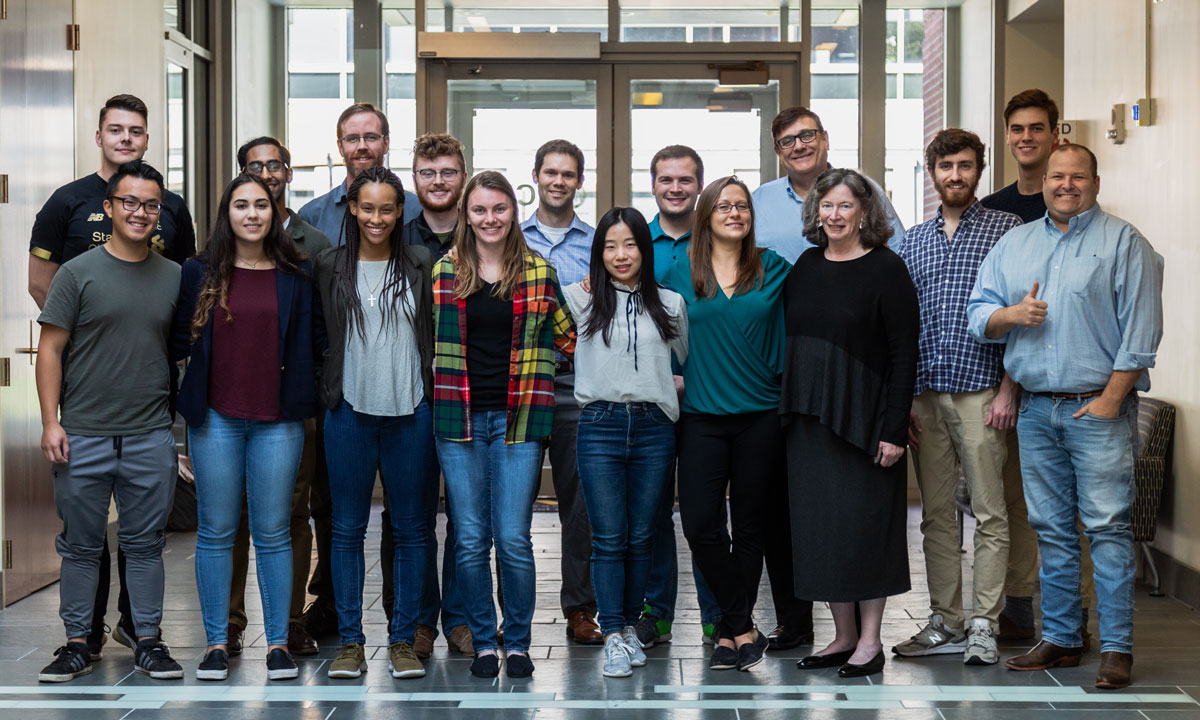Dental and orthopaedic implants offer hope to patients in need of tooth, bone or joint replacements. The success of an implant is dependent on its ability to be accepted by the body and integrate with the patient’s living bone. To improve the performance of these devices, Barbara D. Boyan, Ph.D., the Alice T. and William H. Goodwin, Jr. Dean of the VCU College of Engineering, is designing a new kind of implant that is customized to the individual patient, rapidly integrates itself into the body — and can be 3D-printed.
Boyan has received a National Institutes of Health (NIH) R01 grant from the National Institute of Arthritis and Musculoskeletal and Skin Diseases to develop additive manufacturing technologies for dental and orthopaedic implants with unique surface properties that stimulate new tissue formation at the implant site for stronger anchoring. This is one of very few NIH-funded projects using additive manufacturing for biomedical applications.
The project represents Boyan’s long time collaboration with her colleague, Kenneth Sandhage, Ph.D., Reilly Professor of Materials Science at Purdue University. The team is rounded out by VCU professors Zvi Schwartz, D.M.D., Ph.D. and D. Joshua Cohen, M.D. in the Department of Biomedical Engineering and Ibrahim Guven, Ph.D. and Charles Cartin, Ph.D. in the Department of Mechanical and Nuclear Engineering.
“We’re creating a surface for implants that mimics the natural, biological surface. With this surface, we’re convincing the cells of the body that the implant is their natural environment, that this is a good place to be. When you can do that, you can get a better healing response, which is exactly what we see,” Boyan said.
Developing medical devices that convince the body they are biologically indigenous is something of a through-line in Boyan’s career as a researcher and inventor. A fellow of the National Academy of Inventors, she holds 23 U.S. and multiple international patents for inventions that treat musculoskeletal defects by harnessing the body’s own regenerative processes. She has cultivated a distinct advantage that she credits for many of her discoveries.
“I think like a cell,” Boyan said with a laugh. “And whenever I give lectures, I tell students, ‘You’ve got to make your brain think like a cell.’”
How do you trick a cell into thinking a new implant is actually native bone? One way is to give it a coarse, spongy surface. Previous research by Boyan and her lab has demonstrated that when a surface mimics the roughness of the natural bone surface, multipotent progenitor cells sense it and differentiate into osteoblasts, which are the cells that produce the matrix for bone formation to help anchor and integrate the implant.
Engineering this surface for additive manufacturing is essential to tailoring the implant to the specific patient.
“In medical device development today, a design is established and different sizes of that design will be made. One size never fits all,” Boyan said. “But economically, companies really can only afford to manufacture three to five sizes of something. That’s not enough for personalized medicine.”
Additive manufacturing, on the other hand, allows for one-off, made-to-order bone and dental implants based on the patient’s imaging scans. Currently, 3D-printed implants are possible, but not with the regenerative surface Boyan and her colleagues are developing. The ability to use additive manufacturing to produce complex, biocompatible designs that have biomimetic surfaces promises to change the way orthopedic and dental implants are made and will support much more personalized medicine.
Michael Berger, a doctoral student who has been a researcher in Boyan’s lab since his days as a biomedical engineering undergraduate at VCU, explained that the “recipe” for the surface they are creating starts with titanium dioxide, a highly biocompatible material. “Your immune system sees titanium dioxide and responds to it in a way that promotes healing,” he said. “Together with the Purdue team, we are modifying the surface to further improve the biological response.”
The NIH grant, together with funding from Virginia’s Center for Innovative Technologies, is enabling Boyan and her collaborators to conduct fundamental research to develop additive manufacturing parameters for optimizing implant surface design and test their performance under different mechanical loads and conditions. For the next phases of the project, the lab’s longstanding partnerships with the Commonwealth Center for Advanced Manufacturing and VCU Health will come into play.
“VCU Engineering is ideally positioned to carry this research a very long way,” Boyan said.
